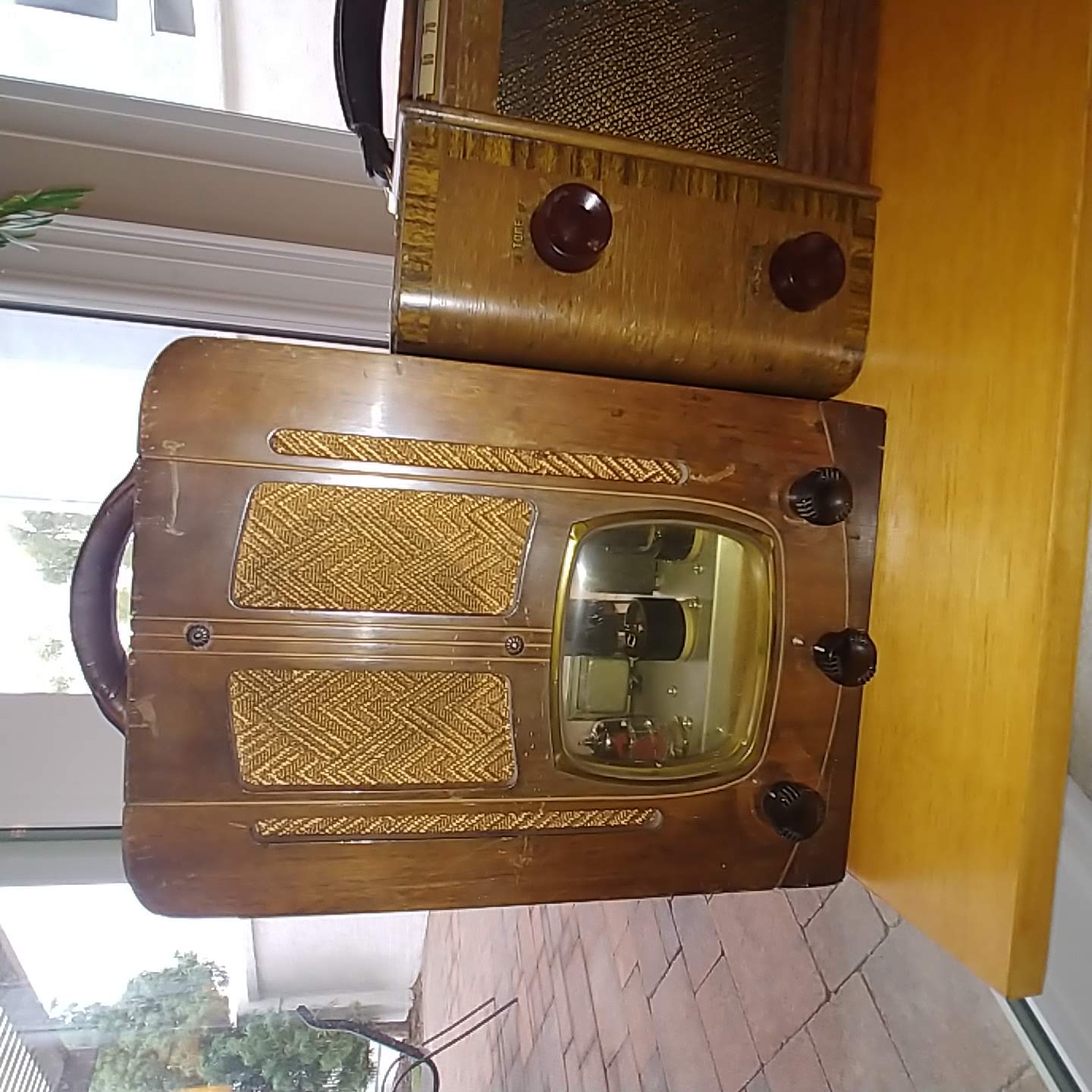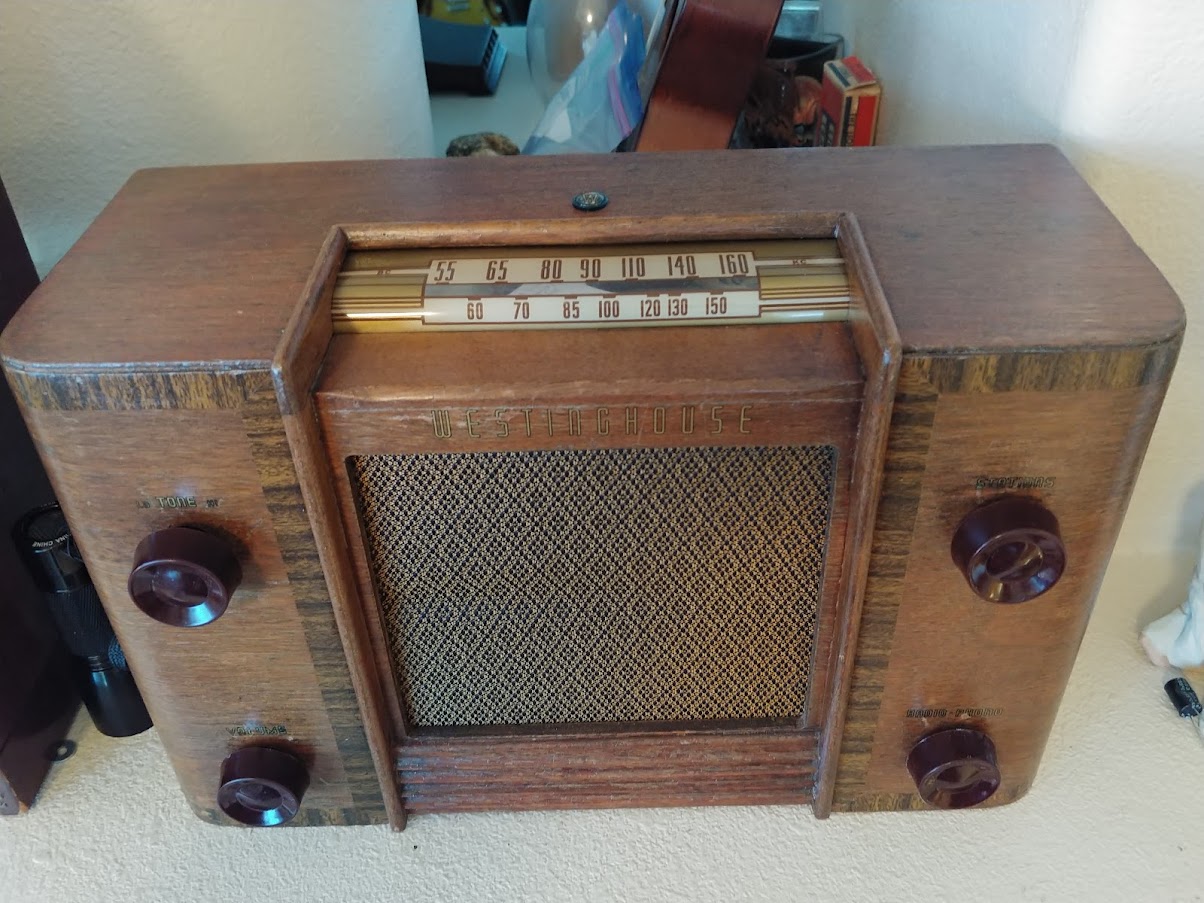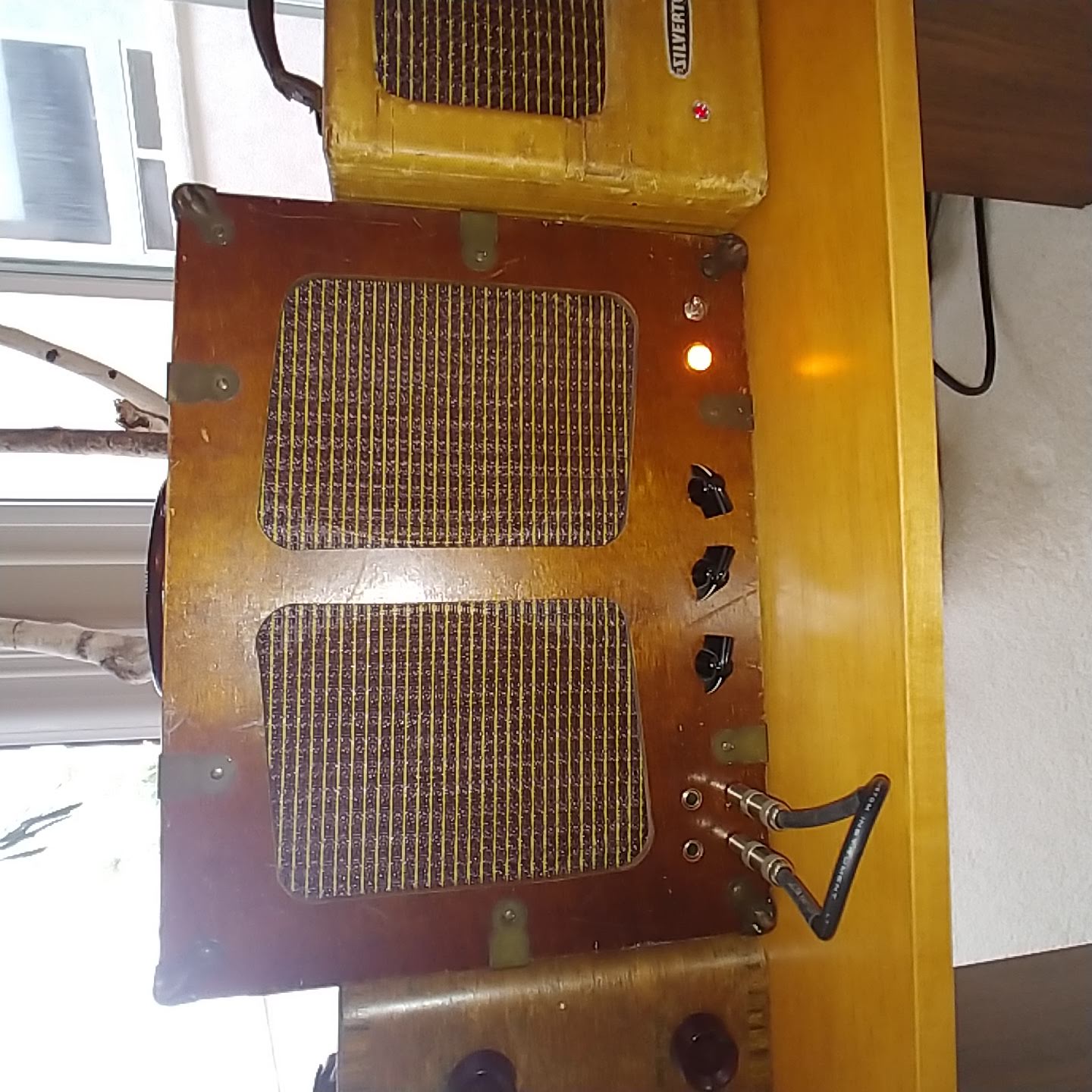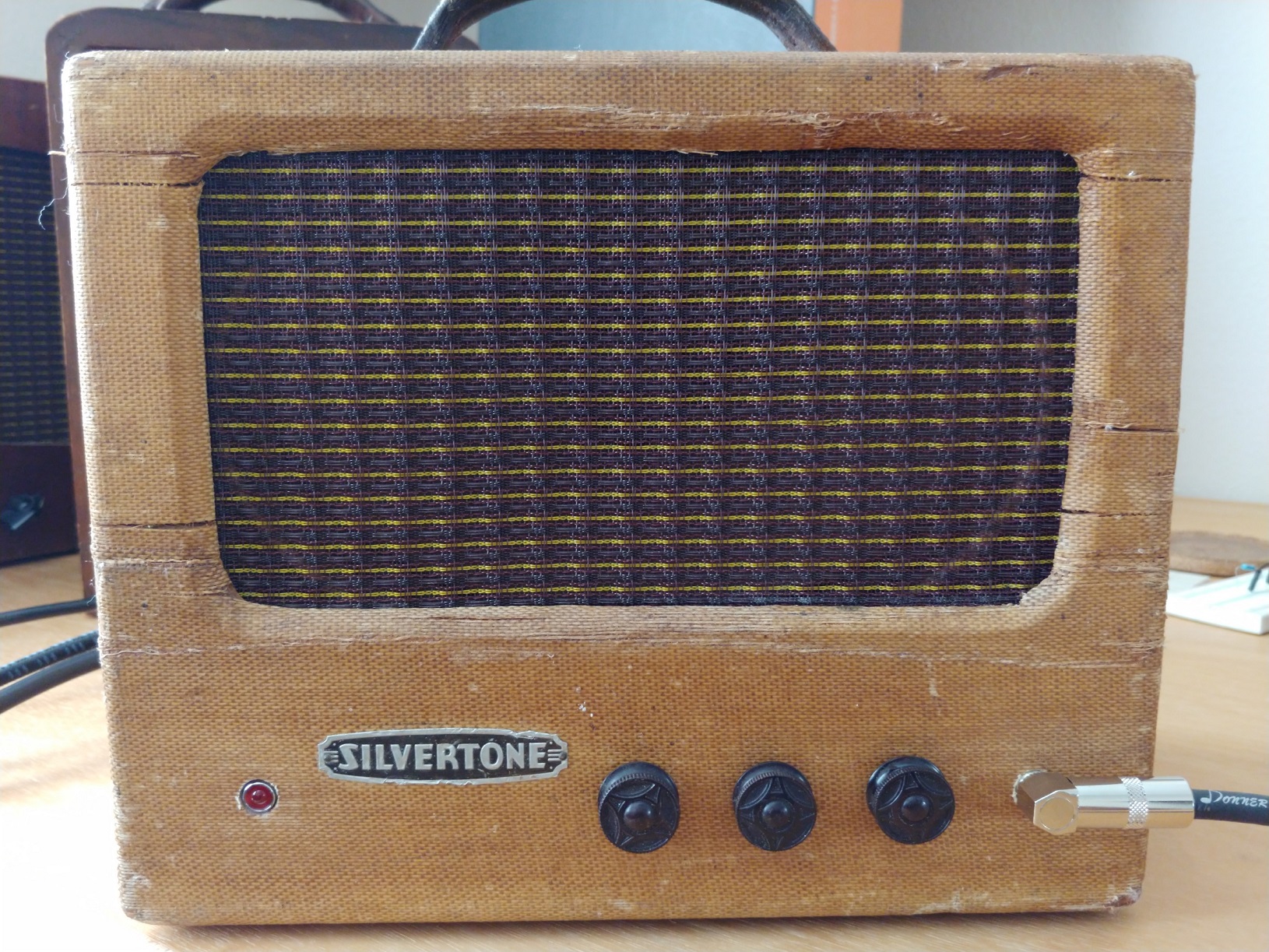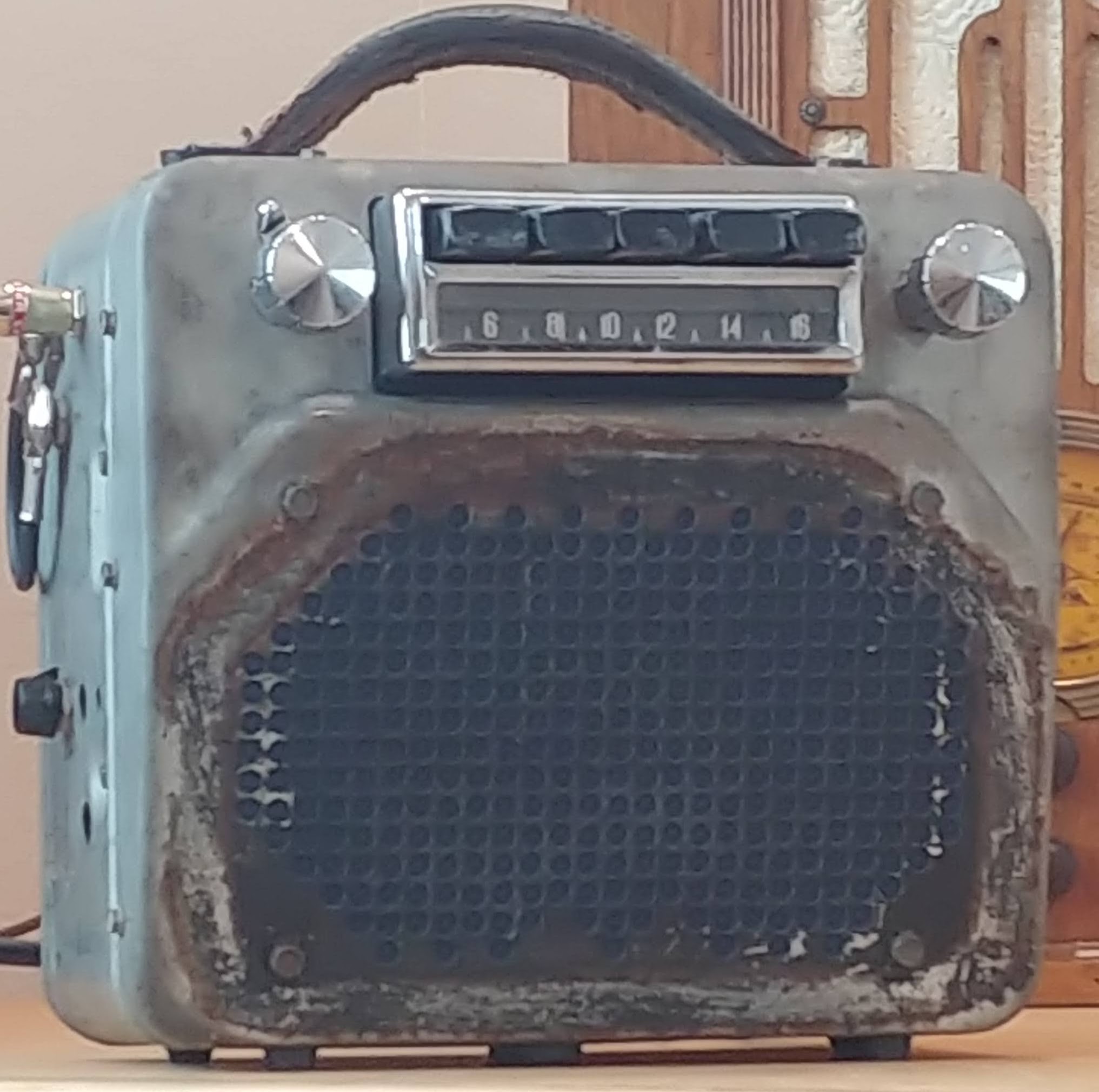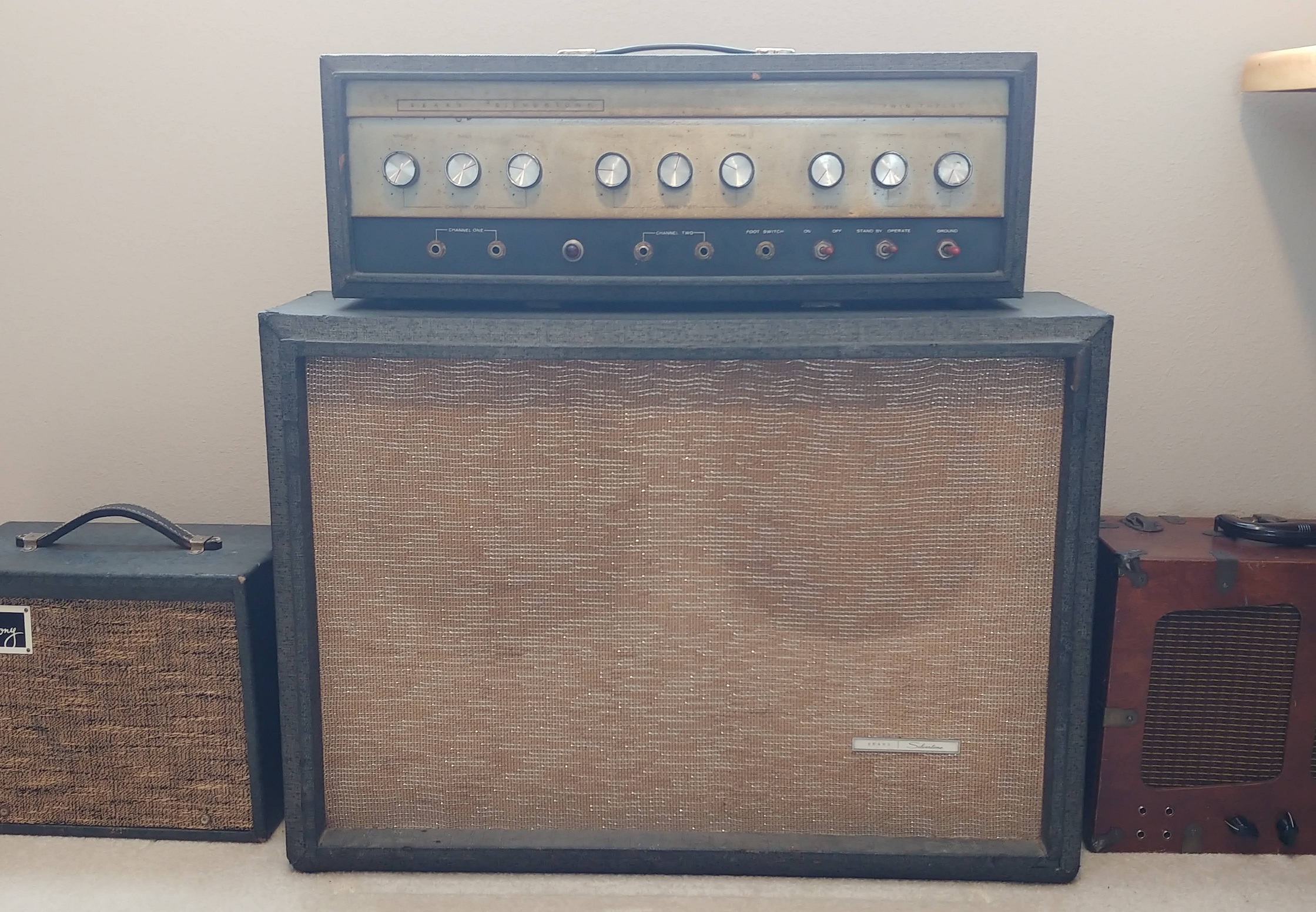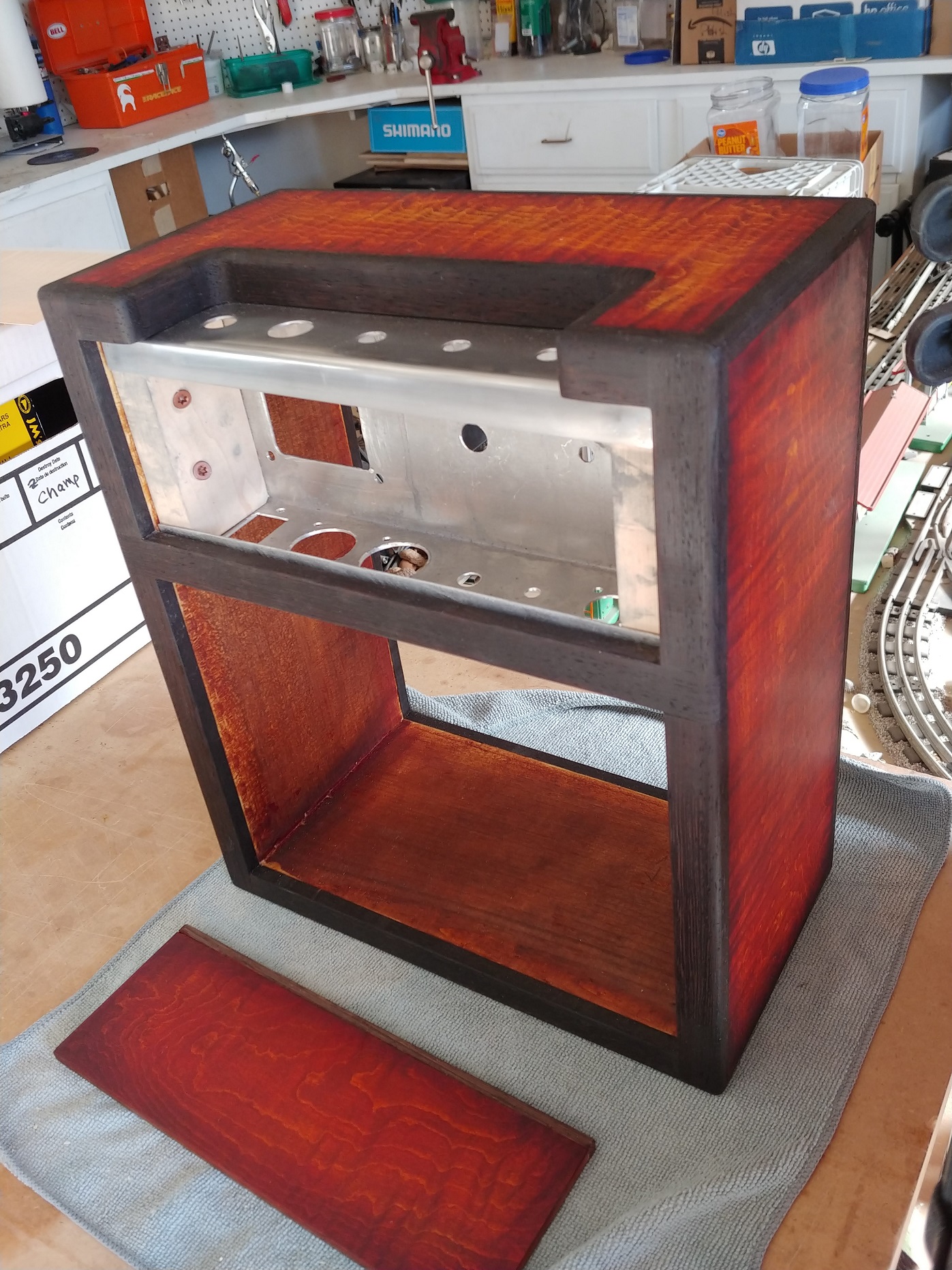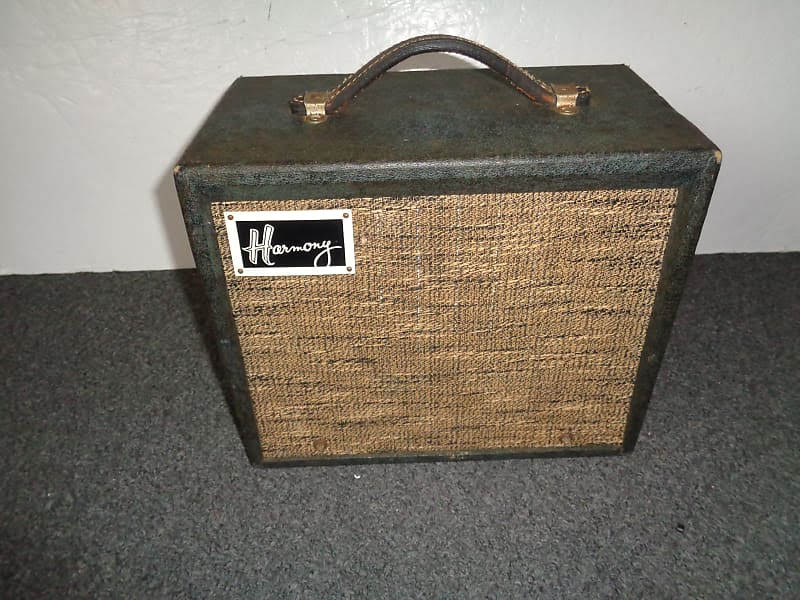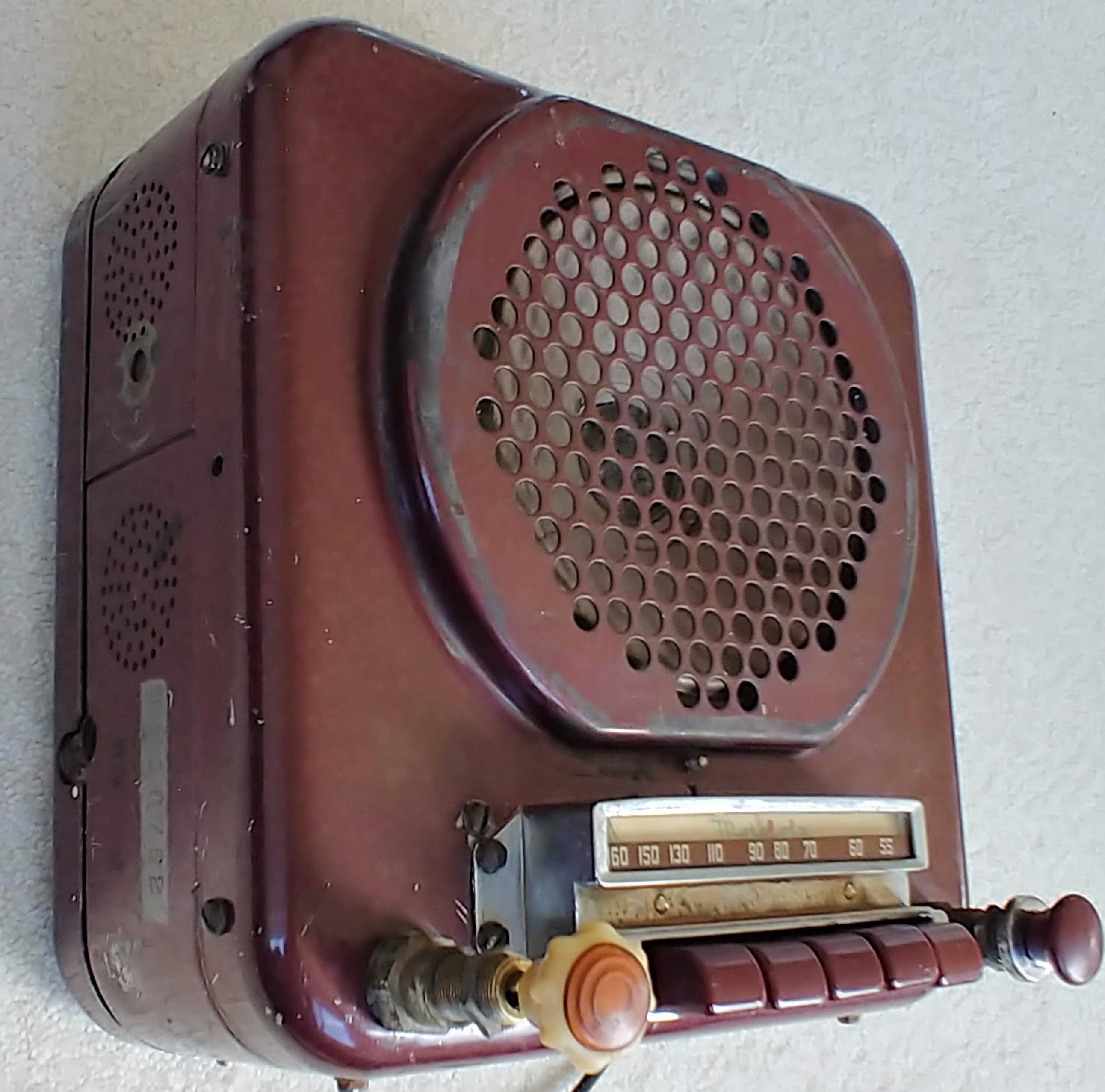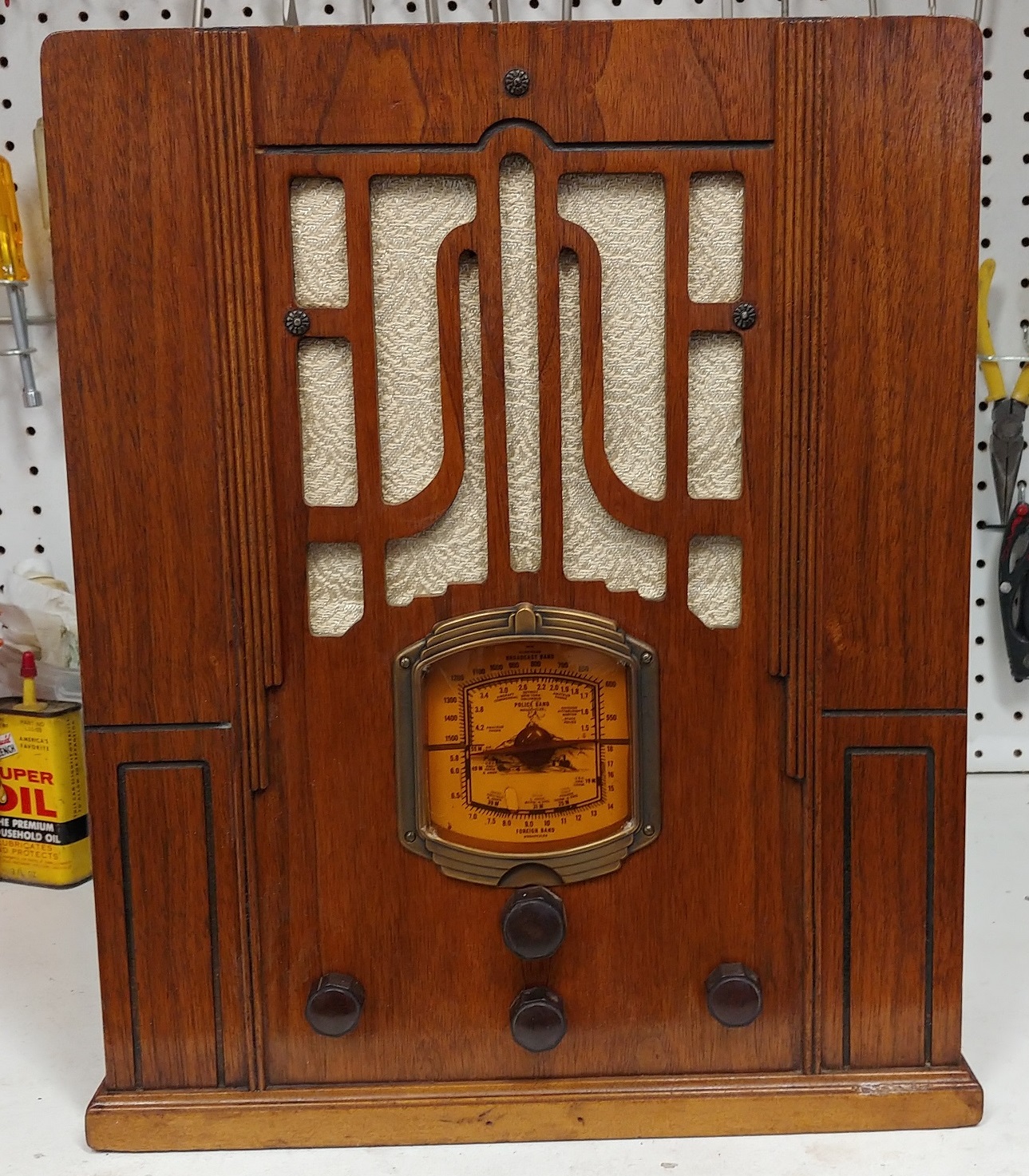.jpg)
The Silvertone Tweed Champ
The Silvertone Tweed Champ is a classic tweed guitar amplifier built into a great old 1940 Silvertone radio cabinet and chassis. The setup breathes the mojo that you would expect from a 50’s tweed guitar amp. The amp features an 8” Jensen ceramic speaker and uses the Tweed F51 Fender Champ circuit from the 1956 era. It includes a master volume and an external speaker switch to allow any speaker cabinet to be connected. There is also a switch to remove the negative feedback from the signal for a more gritty sound. This amp sounds really great producing warm buttery tones and gritty drive expected from a vintage tweed and looks the part with natural patina that can only be accomplished through normal use over the years. Modern speaker, transformers, tubes and electronics give the amp the durability and performance ready for years of use.
The Radio
Built in 1940 Silvertone 6861 AM battery radio that also could be plugged into AC power. The 6861 was a 6 tube radio that used a 50Y6GT rectifier tube when AC power was used. The output tube was 3Q5GT into a 5” speaker.
https://www.radiomuseum.org/r/sears_roeb_110412_6861.html
The radio came with four original batteries that will be restored into functioning batteries that contain modern equivalents producing the correct voltages with the original connectors.
The inspiration for converting into a guitar amp (always a tough decision) was because IMO the front of the radio had a rather unappealing design and the fact that the cabinet was in tweed with a leather handle and could fit a 8” guitar speaker. The chassis and knobs will also be repurposed for the guitar amp.
The Radio came with original batteries from the 40’s. The original cardboard battery sleeve will be removed and repurposed with modern batteries. In addition, all of the radio components will be used in future radio projects.
The Cabinet
The cabinet was appealing because it was large enough to accept an 8'' guitar speaker. It also was in a vintage tweed and had a really nice leather handle. There were many internal wood braces used to support the radio chassis shelf that were removed. All of the corners were loose because of age and there was a missing corner brace. The brace was fabricated from wood and stained for a close match. Then wood glue was applied to all the joints and clamped in place. Afterward, the cabinet was nice and tight,
ready for its next role as a solid guitar amplifier.
The cabinet front with all trim removed
All the braces were glued and clamped in place to give the cabinet a solid square foundation for the speaker and chassis
The cabinet speaker opening was sized to cover the permanent lines inscribed by the sharp edges of the brown radio bezel. Only the upper corners remain with a couple of screw holes that will be filled and stained to match.
The original metal feet were removed to allow for the chassis to be mounted and new rubber feet installed to reduce hard surface vibration. The rubber feet screws will attach directly to the chassis holding it firmly in place
Speaker Baffle
A new speaker baffle was fabricated out of baltic birch ply that provides a solid mounting surface for the Jensen 8” speaker
The speaker baffle is stained to match the patina of the cabinet. Mounting screws are placed around to the perimeter to provide a solid (yet removable) mount to the cabinet
The Speaker grill cloth is period correct deep oxblood giving the amp the look of a original from the 1950’s
The original radio knobs will be mounted on the front panel below the speaker for the volume and master volume controls. A jewel pilot light and a deep reach guitar input jack complete the front panel.
The Chassis
The original radio chassis was used to provide period correct patina. Where possible the original holes were used for the new guitar components, but often new holes needed to be made for the proper layout. Some additional metal plates were soldered in place to cover original holes to provide proper mounting surface.
The Wiring
The circuit is based on the 1950’s Fender 5F1 design. Modern components, tubes and transformers are incorporated. The layout is point to point handwired, with wire routing and component layout designed for best noise reduction. In addition an additional filter stage precedes Fenders original design to keep the 60cycle hum to absolute minimum. High quality components are used throughout with an eye toward best sound and tone. This is a very quiet amp with a fantastic tone from J&J tubes and Jensen speaker.
Knob Repair
One of the knobs was cracked. So the repair required some modeling putty formed to create a D Slot for the pot shaft. Works perfectly. Small white dot was added to each knob to clearly determine where they are set.
Handle Repair
The handle was in decent shape but had a few pieces of the leather that were loose when the radio received. These were reattached and the leather was moisturized and is ready for years of use as a guitar amp.
Back Panel and Labels
The original radio back panel needed a ventilation hole cut to provide cooling for the guitar tubes. The radio back panel used the tolex as a hinge for a corner to be opened. This corner was glued in place to provide a solid panel. Before this was cut the original labels needed to be removed to preserve intact. Steam was used to soften the glue and a razor blade in a holder was used to carefully peel back the softened label. Extreme care so as not to tear the very fragile label. They came off perfectly, but quite a painstaking process. Once off the labels were flattened and allowed to dry. They will be attached to the inside of the cabinet with hide glue to be more easily removed if needed in the future. A great addition to the history of this piece.
